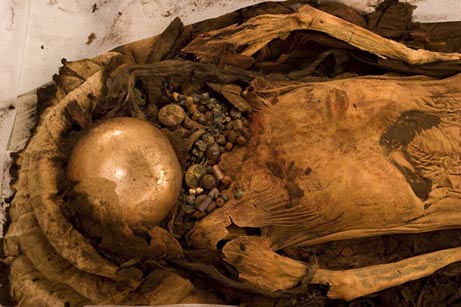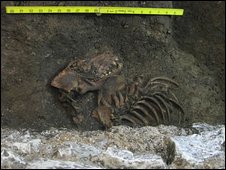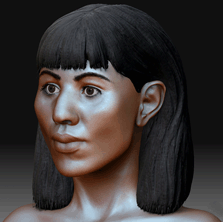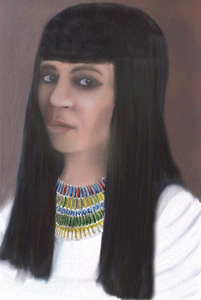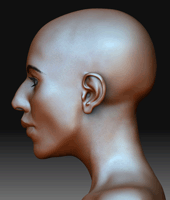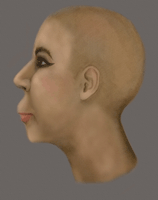Mummy and lock of hair showcased at college
An Egyptian mummy and a lock of Mary Queen of Scots’ hair are two of the artifacts that are put on display at a Lancashire college.
The collection will be presented at Stonyhurst College, a 16th Century former manor house near Clitheroe. Other items that are included are 17th Century Persian astronomical calendar, a hat belonging to St Thomas More and Arthur Conan Doyle’s school desk.
They will be on showcase from 4 August over the summer months. The Egyptian Archaeology mummy is the body of a young boy aged about five or six years that was preserved at death and is about 2,500 years old.
A Jesuit missionary and archaeologist with a strong scientific interest in Egyptology discovered it in the 1850s and brought back to Stonyhurst. During the tour of the college, visitors will allowed to see the desk on which Sir Arthur Conan Doyle carved his name, the table on which Oliver Cromwell slept before the Battle of Preston and Jacobite pistols.
Katherine Walker, marketing director at Stonyhurst, said: “It will be a rare opportunity to view artefacts that are sacred as well as secular. “Stonyhurst is a Grade I listed building and well-known for its magnificent towers and gardens.
“It is considered as the ‘Jewel in the Crown’ of Lancashire’s beautiful Ribble Valley, so well worth a visit.”
33 Peru Mummies Victim of Human Sacrifices
The head of a team of archaeologists examining 33 mummies found in Peru says the bodies were human sacrifices.”The majority of them were sacrificed using a very sharp bladed tool, possibly a copper or bronze tummy knife. And for the majority there are numerous combinations, complex set of dissimilarity on cutting of the throat, “Mr. Klaus said.
Sacrifices were made “to make certain that there would still be rain and agricultural fruitfulness”, Klaus explained.
What made the finding so unusual in the eyes of the experts was that the majority of the mummies were females.”The blood sacrifice of a large group of women is something that is very, very strange, it is the first time we have ever seen this”, Mr. Klaus said.
In fact, 30 of the 33 bodies were female and according to Klaus they were all very young when they were sacrificed.The majority hadn’t reached 15-years-old and some of the mummies were children not older than nine.
Professor Klaus explicated that in Andean society children weren’t considered human beings. “Children are not human beings since human life comes from mountains. And when a child is born, a child is likened to a wild unmanageable mountain spirit,” Klaus said.
In an excellent state of preservation, many still with their hair and teeth intact, the mummies have provided endless study material for Klaus .He was able to extract DNA, learn about the diseases they had, their diets, their ages, causes of death and even possible kinship among the mummies.
Medieval finds at university dig
Roman pottery, medieval remains and 11th Century dog bones have been found at the heart of Cambridge University during an archaeological dig.
The dig has been taking place beneath a tearoom in the university’s central offices, known as the Old Schools. It was one of the events marking the 800th anniversary of the university. Some material pre-dates its foundation in 1209 by over 150 years, and is said to be the first evidence the area was occupied by an Anglo-Saxon community.
Archaeologists have unearthed several animal bones, boundary markings and signs of quarrying, which a spokesman said suggested that in the final decades of the Saxon era the foundations of Cambridge were being laid.
Roman occupation
Richard Newman of the Cambridge Archaeological Unit said: “The site has enabled us to prove what we previously had no proof for – that by the time of the Norman Conquest there was a thriving settlement in the middle of Cambridge.” The dig has reached what would have been ground level in ancient times, even before the Saxons arrived.
Cambridge was founded by the Romans, who occupied the area on the other side of the River Cam to the university. In Anglo-Saxon times, a cluster of domestic properties began to emerge, and the dog, which appears to date back to that period, would have been a valuable ally for the family that owned it, said Mr. Newman.
“It would have been a working animal,” he said.
“A dog would also have given people security, it was useful when it came to protecting your possessions and it was cheaper than a lock.” By the time the university was founded in 1209, the area was a busy commercial centre.
Stone Age flutes found in Germany
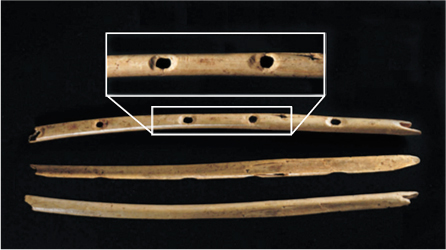
A new report concludes that people living in Europe more than 35,000 years ago made this flute, shown from three different angles, out of a vulture bone. A magnified portion of the flute, top, provides a closer look at two of the flute's finger holes.
The hills may be alive with the sound of music, but so were vulture bones and mammoth tusks for ancient Europeans. Researchers working at two Stone Age German sites have unearthed a nearly complete flute made from a vulture’s forearm as well as sections of three mammoth-ivory flutes.
These 35,000- to 40,000-year-old finds are the oldest known musical instruments in the world, says archaeologist and project director Nicholas Conard of the University of Tübingen in Germany.
Bone flutes previously unearthed at Stone Age sites occupied by humans in France and Austria date to between 19,000 and 30,000 years ago. And many researchers now consider the spaced holes in a controversial 43,000-year-old find, dubbed a Neandertal bone flute in 1995, as the products of chewing by cave bears.
The bone flute, which excavators found in 12 pieces, and the ivory flutes were discovered in the summer of 2008 at Hohle Fels cave. The team reports in an upcoming Nature that the finds are from the time of the Aurignacian culture, when modern humans first migrated to Europe from Africa. Scientists estimate that the culture existed from about 40,000 to 29,000 years ago.
Conard’s group found no human bones near the ancient flutes. But since human remains accompany later Aurignacian finds at other sites, the scientists assume that Homo sapiens, not Neandertals, made the musical instruments.
Using crystal-clear 3-D images from Meresamun’s historic scans, two forensic artists reconstruct the face of a 2,800-year-old Egyptian priestess
Two forensic artists working separately and using different techniques reconstructed Meresamun’s face. Josh Harker used the latest software and imaging technology (left), while Michael Brassell created more traditional police-artist sketches by hand (right), filling in only the color digitally.
She was more than just a pretty face. The ancient Egyptian Meresamun, who lived around 800 B.C., was a working girl, a priestess-musician who served Amun, the preeminent deity of Thebes. Her mummified remains, sealed 2,800 years ago in a skintight coffin of cartonnage (layers of linen and plaster), were examined by researchers at the University of Chicago’s Oriental Institute in September 2008 using the latest in CT scanning technology, a “256-slice” machine that produced startlingly vivid images. For months, she has since been the immensely popular subject of the Oriental Institute Museum’s exhibition, The Life of Meresamun: A Temple Singer in Ancient Egypt.
Now, the headline-making CT images have helped two individuals–each working separately with 3-D STL (stereolithography) images of Meresamun’s skull produced from the scans, but using different techniques–reconstruct Meresamun’s face. Michael Brassell is a Baltimore-based forensic artist for NamUs (pronounced “name us”), the National Missing and Unidentified Persons System established by the National Institute of Justice. He created traditional hand-drawn pencil sketches (digitally colored for an “artsy” effect), using the exact same methods he employs when helping the police track down a cold-case victim. Josh Harker, a forensic artist who lives in Chicago and was originally trained as a sculptor, worked digitally, leveraging the latest software and imaging technology.
(Photo courtesy Josh Harker) (Photo courtesy Michael Brassell)
Meresamun in profile, shown without hair to reveal the contour of her skull
